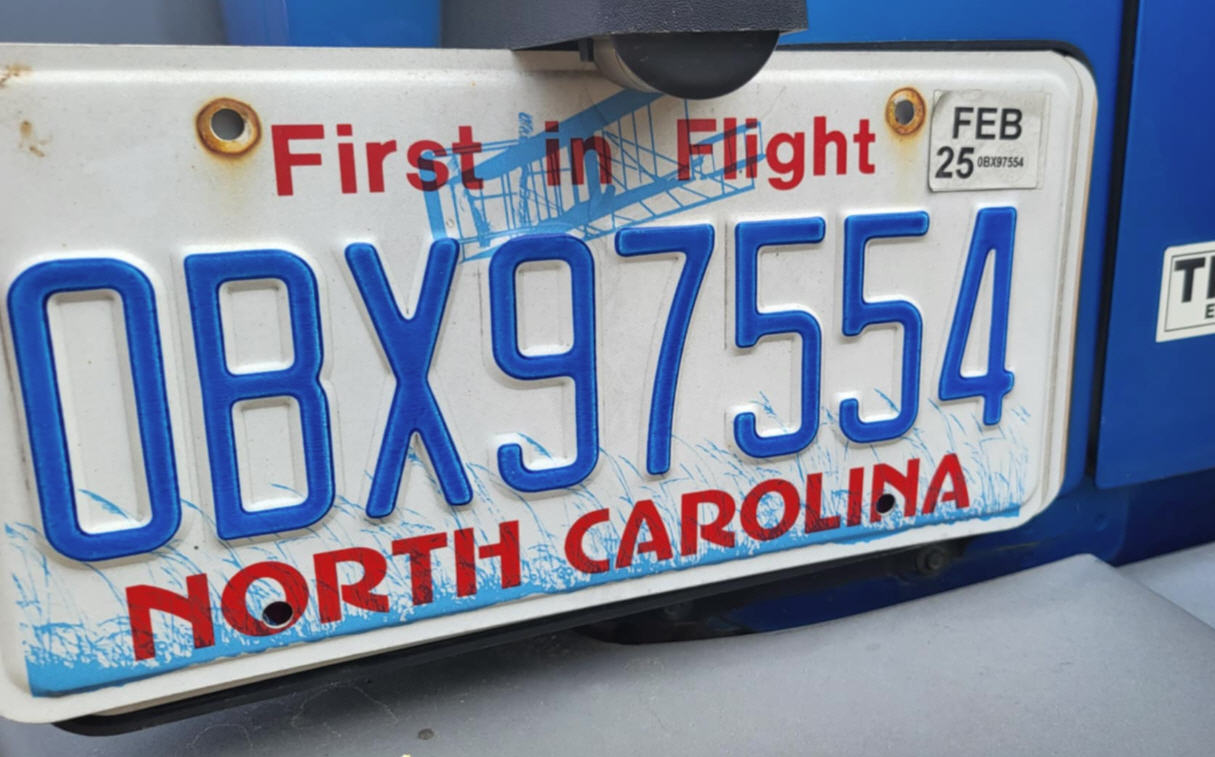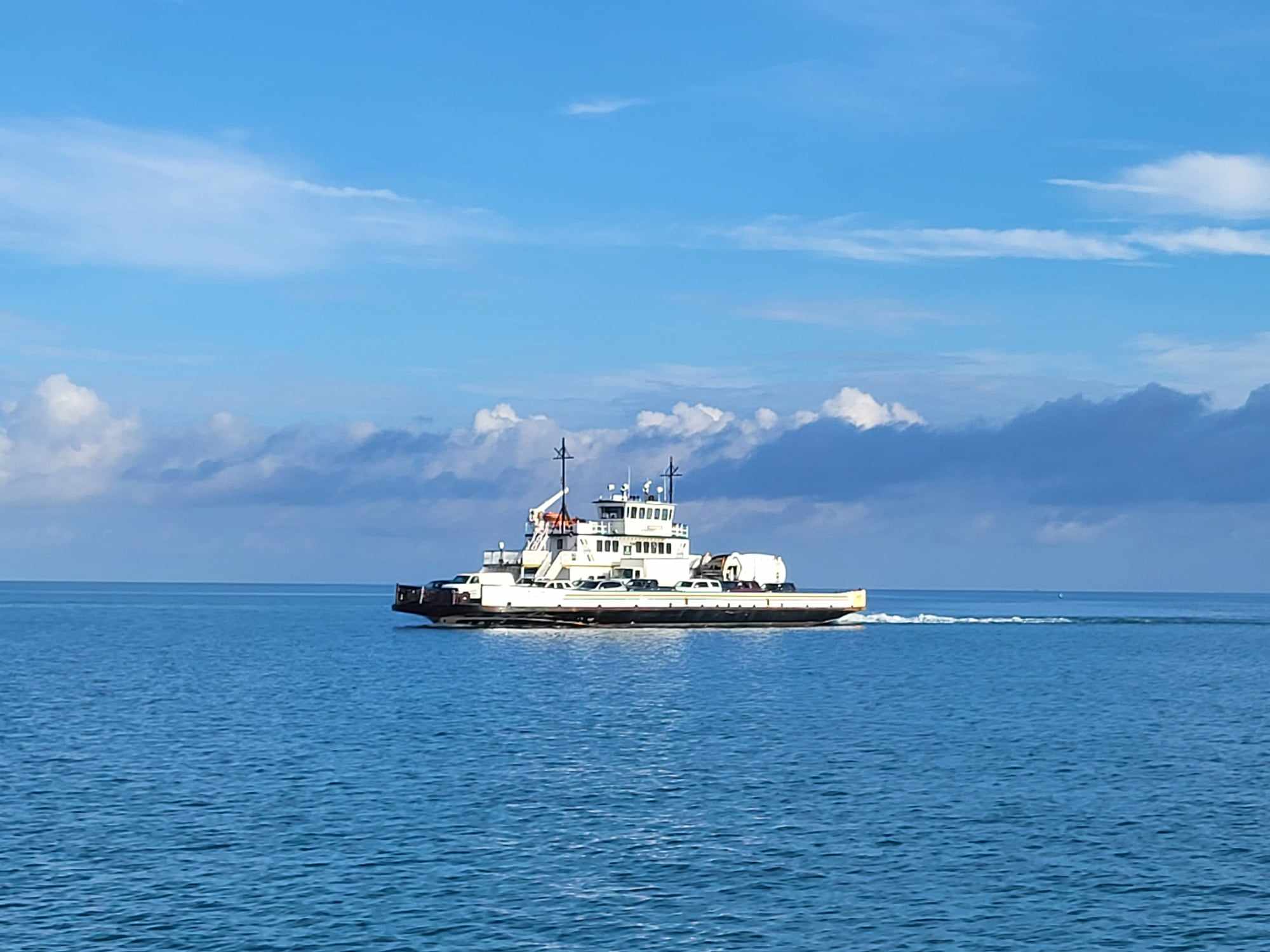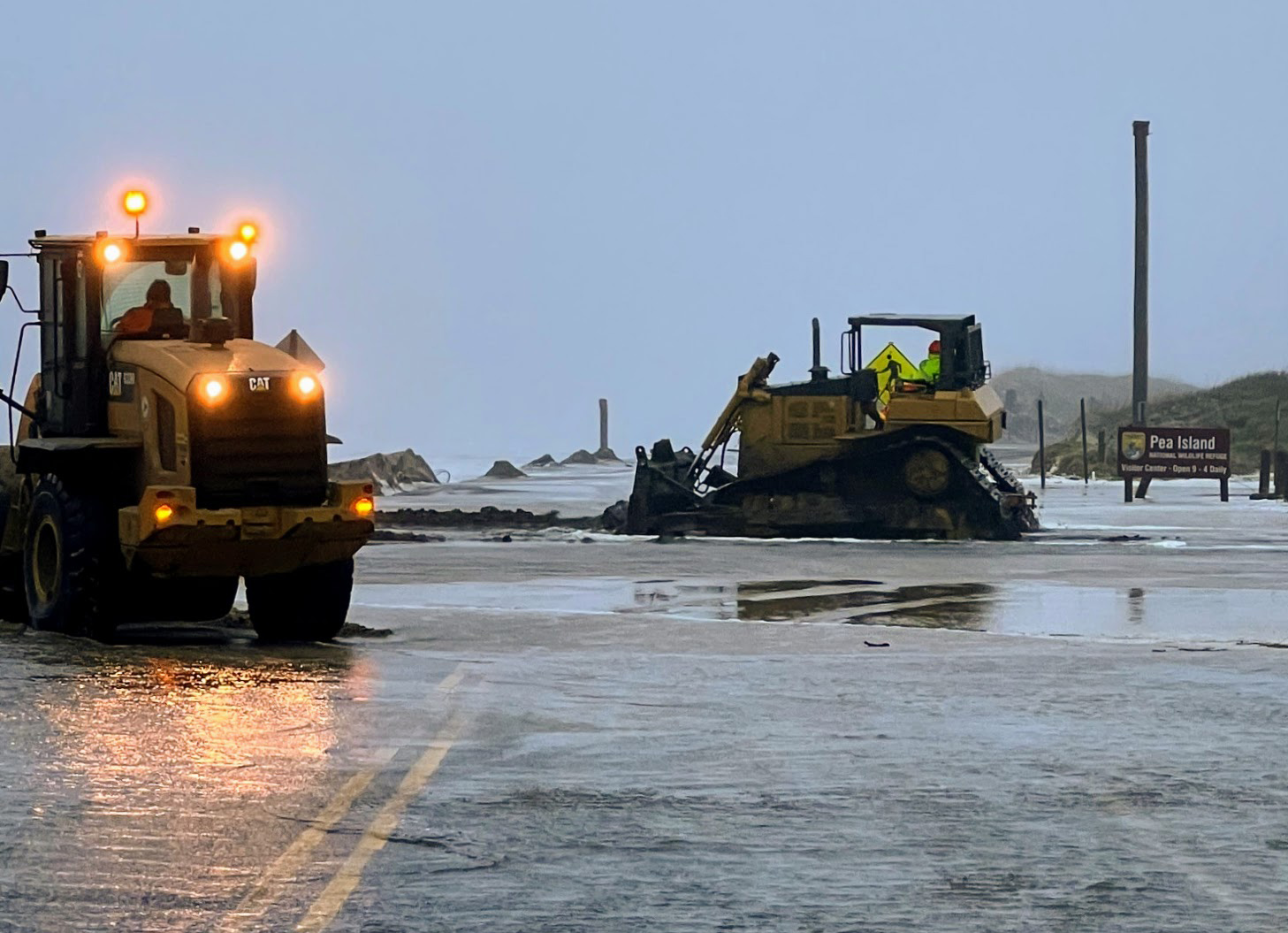NOAA is seeking comment on allocation of bluefin tuna quotas and other issues By CATHERINE KOZAK
Quota allocation of bluefin tuna has been a sore issue for Outer Banks watermen for a long time, but there now may be a window of opportunity to improve the chances for North Carolina fishermen to catch the valuable giant fish.
“We kind of feel like we haven’t been looked after real well,” Dewey Hemilright, a Wanchese waterman, said at a public meeting in Manteo held last month by NOAA Fisheries on a proposed update of the bluefin tuna management plan.
The National Marine Fisheries Service is gathering input on ways to address allocation issues, decrease unintended catch, and reduce discards of dead bluefin tuna.
Hemilright said that Outer Banks fishermen would favor splitting the annual Atlantic quota for the general category —- commercial handgear — into 12 equal parts, and allowing switching between categories, say, from general to longline.
“There’s some tough decisions coming down the pike on this,” Hemilright told moderator Brad McHale. “Jobs are important now. It needs to be equitably split out.”
McHale, branch chief for the Highly Migratory Species Management Division in Gloucester, Mass., said that the landings of bluefin tuna coastwide have been increasing and are approaching the amount of allocated quota.
At the same time, he said regulatory changes made recently by the International Commission for the Conservation of Atlantic Tunas, the international body of 47 nations and the European Union that manages the migratory species, reduced the amount of uncaught quota that can be rolled over to the next year from 50 percent to 10 percent.
Overall quotas have also decreased, and since 2007, separate quota for estimated dead discards has been eliminated. Now the total allowable catch includes the dead fish, which had initially been expected to be covered by unused quota.
“We’re catching our quota, so there isn’t a lot of wriggle room,” McHale said in a later interview. “We just have to manage more with less.”
Of the 957 metric tons allocated last June, the general category was 435 metric tons; angling, 182 metric tons; purse seine, 171.8 metric tons; longline, 61 metric tons; harpoon, 36 metric tons; trap, 0.9 metric tons; and reserve, to account for dead discards and scientific research, 70.6 metric tons.
ICCAT recently ruled that all sources of fish mortality must be monitored and reported. The commission also required that dead discards be minimalized as much as practicable.
Similarly, European fisheries managers this week implemented a phased ban of fish discards.
McHale said that only pelagic longline vessels, which carry NOAA observers, are required to report dead discards in logbooks, so most of the data on discarded dead bluefin is extrapolated from landing data that records effort and catch information. In meeting the need to address the discards, he said, NOAA will likely be looking at expansion of the reporting requirement to the other categories.
Longline fishermen last year were allocated 8.1 percent of the quota. Longliners don’t directly fish for bluefin, but they’re allowed to keep incidental catch.
Reporting across the categories makes sense, McHale said, but it may be difficult for some fishermen — and NOAA — to handle the additional paperwork.
“We need to assess the burden — how difficult it is for fishermen to submit the information,” he said, “and how quickly the government can use that information.”
There are strict requirements for when vessels can keep a dead bluefin, so when a tuna is caught incidentally, it often has to be discarded.
In November 2011, for instance, a New England groundfish vessel caught an 881-pound bluefin in a trawl net, and NOAA’s Office of Law Enforcement was notified. Although the vessel had an Atlantic tunas general category permit that allowed it to catch bluefin, it was only permissible with rod and reel, handline, or harpoon. The fish had to be surrendered to NOAA, which sold it at auction to the highest bidder.
But most of the time, the incidental catch ends up being thrown overboard.
McHale said that a primary goal is to determine how to reduce incidental catch, and therefore dead discards. There are many different theories about why it happens, he said, but there’s no “smoking gun.” Another important goal, he said, is to increase the opportunity for U.S. fishermen to catch their quota.
Glen Hopkins, a Manteo waterman, said that dividing the general category into 12 months would make it easier to catch the fish when and where it’s available, rather than establishing artificial parameters that don’t fit the unpredictability of the fishery and closures of regions.
“I feel this could give equal access involved in fishing bluefin’s range and more accurate catch information,” he said. “I feel like this might ease the pain if we do face closed areas.”
Hopkins told McHale that the reality is that no one really knows where the bluefin will be, and it’s only gotten more uncertain with the recent “climate instability.”
“This area is probably the most dynamic area in the world,” he said of the Outer Banks. “One year bluefin; one year, big eye (tunas).”
Any revisions in bluefin management must be fair to the winter fishery off the Southeast coast, which was allocated 10.1 percent of December quota, said Charlie Pereira, a Buxton fisherman and president of the Winter Bluefin Association.
Pereira said that the Magnuson-Stevens fishery act bars discrimination between regions.
“New England states get 10 to 1 compared with what we get,” he told McHale. “We think a 12-month fishery is the most fair and equitable way to distribute the quota.”
This year, he said, the winter fishery was extended from Jan. 31 to March 31.
“We managed to catch allour quota in two to three weeks,” he said, “so we were shut down very quickly.”
In lieu of a 12-month fishery, Pereira said there should be at least a 30 percent quota allocation.
“Millions, if not tens of millions, of dollars,” he said, “gets thrown away just because of an arbitrary government calendar year.”
A fisherman can earn about $8-$20 per pound for a bluefin, which can weigh more than 1,000 pounds. The state record of 805 pounds, 8 ounces was caught March 2011 off Oregon Inlet. The former state record bluefin tuna weighed 744 pounds. The International Game Fish Association record was caught off Nova Scotia in 1979 and weighed 1,496 pounds.
McHale said that a total of 15 meetings have been held across the country, with the last one on Friday in Orlando.
A common theme throughout all meetings is that the dead discard issue has to be addressed, he said. But otherwise, different regions focused on different concerns.
Manteo was the only area that talked about dividing the quota into 12 months, and in Louisiana, there was concern about the BP oil spill impacts. In New Jersey, where there are a lot of longliners, there was concern that they’re getting punished for having to report dead discard information.
Overall, McHale said, there was little support for reducing the size limits for bluefin.
The next step is to take all the feedback and comments, summarize them and distill them into a new rule.
“There’s going to be lots of pros and cons for any of these ideas that we explore,” McHale said.
The upside of 12 equal shares of quota, for instance, is that it promotes equal distribution of the resource; the downside is that it doesn’t recognize the fishery’s historic pattern.
“There needs to be a balance that we strike,” he said, “because we need to be fair to all U.S. fishermen.”
Comments will be accepted through July 15.
• Submit electronic comments via the Federal eRulemaking Portal http://wwvv.regulations.gov
• Fax: 978-281-9340
• Mail: Tom Warren, Highly Migratory Species Management Division, NMFS 55 Great Republic Drive, Gloucester, MA 01930.
FOR MORE INFORMATION
Click here to read NOAA’s Preliminary White Paper: Issues and Alternatives for the Future Management of Atlantic Bluefin Tuna.
Click here to read the NOAA scoping document on Issues and Alternatives for the Future Management of Atlantic Bluefin Tuna.













